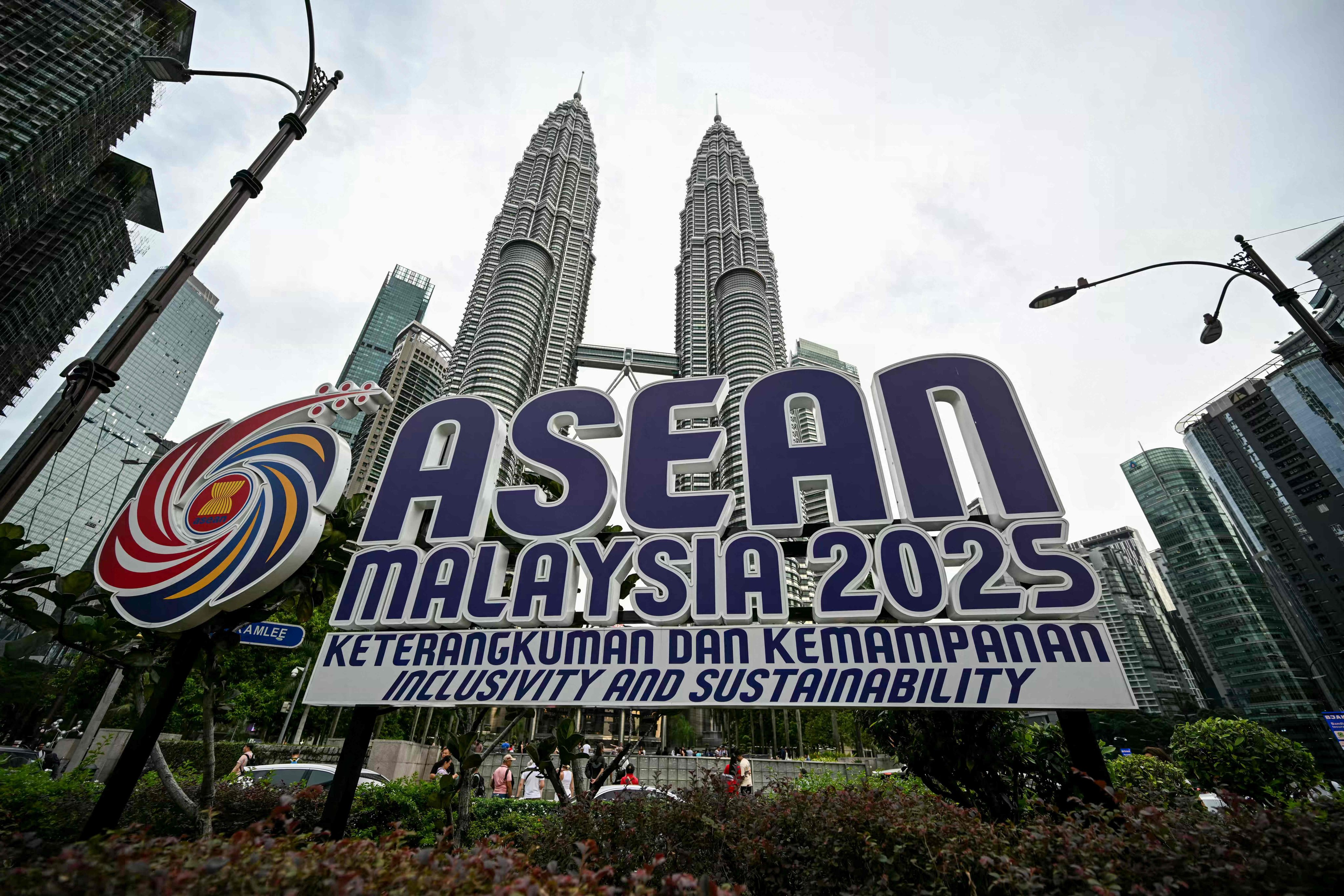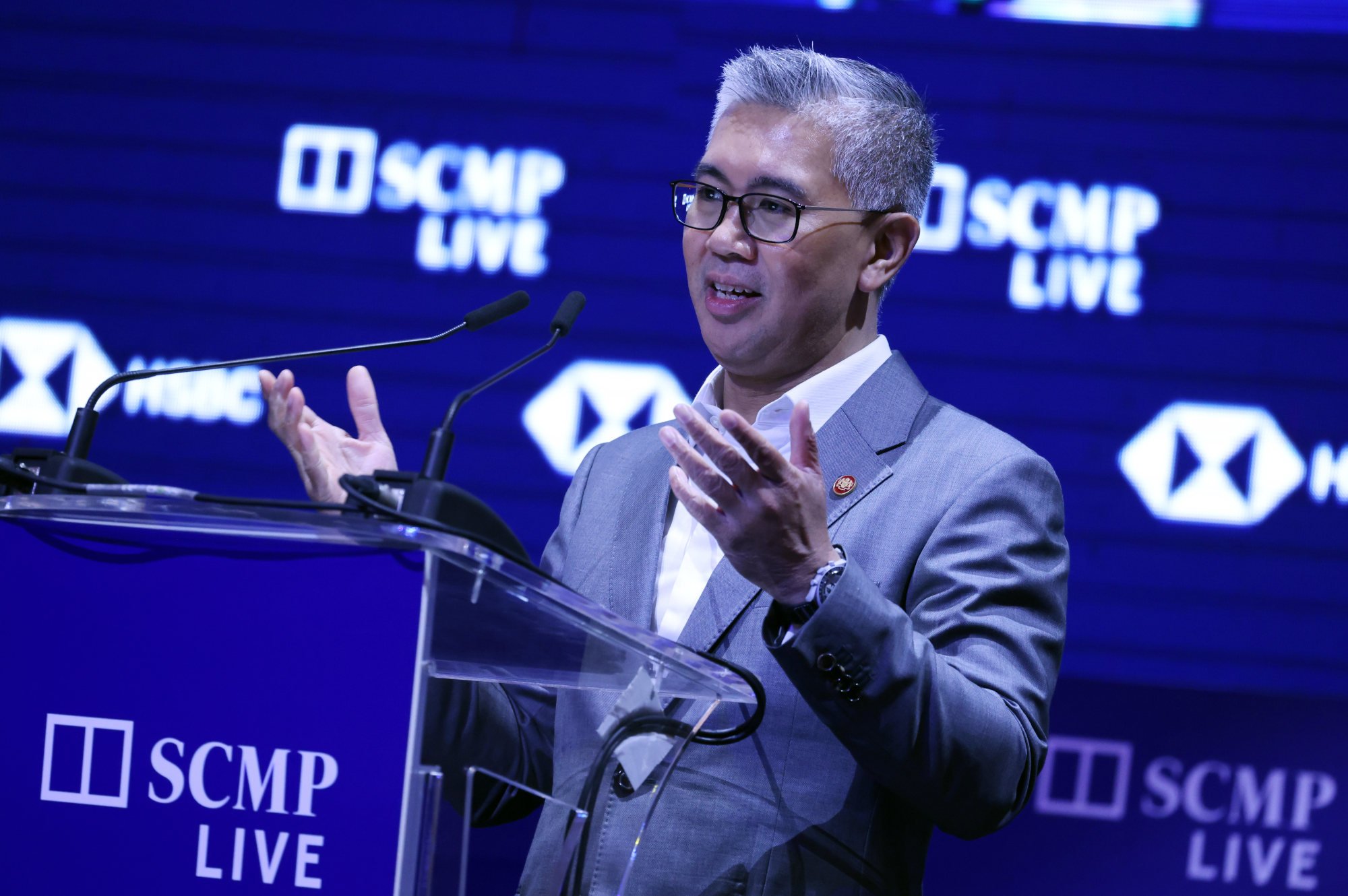Can Asean become a top economy despite Trump’s tariffs and internal hurdles?
As Asean aims to be the fourth-largest economy by 2045, it must tackle internal trade barriers, US tariffs and improve regional integration

Members of the Asean bloc have laid out an ambitious plan to become the world’s fourth-largest economy by 2045, but analysts warn the region must first overcome deep-rooted trade barriers, domestic implementation woes and a shifting global trade order.
Released on Tuesday during the Association of Southeast Asian Nations summit in Kuala Lumpur, the five-year strategy to achieve the economic goal aims to boost regional integration and better address complex issues.
“Carrying on with business as usual will not suffice for this highly dynamic economic region,” the statement said. “For Asean to become the fourth-largest global economy by 2045, countries in the region will need to deepen their economic integration and enhance their agility to address multifaceted challenges.”
The plan’s announcement, which called for increased energy security, transport security, and strengthened supply chains, came after the bloc finalised negotiations on an upgraded Asean Trade in Goods Agreement (ATIGA) on Monday.
First implemented in 2010, ATIGA removed tariffs on 98.6 per cent of goods traded among member states. The upgraded version – expected to be signed in October – aims to further boost intra-Asean trade by eliminating remaining duties and removing non-tariff barriers, such as complex customs procedures and licensing rules.
ATIGA is one of three major agreements that form the foundation of the Asean free-trade area, which seeks to lower trade barriers and build a unified regional market.
Speaking at the summit on Monday, Singaporean Prime Minister Lawrence Wong said the aim was for Asean’s free trade area to be “100 per cent tariff-free”.
The tariff question
The summit was held in the backdrop of growing uncertainties in the global economy brought forth by US President Donald Trump’s “reciprocal” tariffs unveiled on April 2.
Asean member states were the hardest hit by Trump’s tariffs, however, the heaviest levies – those above 10 per cent – were put on pause for 90 days, offering a reprieve and a window for negotiations for economies such as Indonesia, Malaysia, Vietnam and Thailand.
But analysts warn that Asean’s scramble for bilateral trade deals with Washington could undermine regional unity and weaken intra-Asean trade, as US pressure to reduce trade deficits may lead member states to favour American imports over those from within the bloc.
A recent example came earlier this month when Indonesia announced it would stop importing fuel from Singapore and pivot to supplies from the US. This was part of Jakarta’s broader negotiations with Washington to increase imports by up to US$19 billion, with US$10 billion allocated specifically for energy purchases.
Wong at Monday’s summit said that Washington’s tariffs marked “a retreat from multilateralism and a move towards more transactional and bilateral deals”.
“In such an environment, it would be more difficult and challenging for countries everywhere,” he said. “We should continue to constructively engage the US, individually as countries but more importantly, collectively as Asean.”
Kristina Fong Siew Leng, lead researcher for economic affairs at the ISEAS-Yusof Ishak Institute’s Asean Studies Centre in Singapore, said that uncertainty in US trade policy could drive stronger efforts to enhance intra-Asean trade.
“If anything positive could be derived from the current volatile state of affairs, it could be that this situation could act as an apt catalyst to push these initiatives forward and in a deeper manner,” she said.
Growing intra-Asean trade
Malaysian Trade Minister Zafrul Aziz called ATIGA a cornerstone of regional economic integration, aiming to boost growth through the free flow of goods among Asean countries.
“The upgraded version features forward-looking and commercially meaningful provisions to boost regional trade, enhance supply chain resilience, and deepen intra-Asean integration,” Zafrul said.
The call for regional integration aligns with what Zafrul had described as the Asean economic community goal of a “single market and production base”.
Despite this ambition, intra-Asean trade has stagnated for decades, accounting for around 21 per cent of the bloc’s total trade, while China accounted for 20 per cent and the US made up 12 per cent of trade in 2024.
Analysts say that integration within Asean has been slow among member states due to differences in economies, population sizes, political systems, and development levels. Unlike the European Union, Asean lacks a central authority to enforce compliance with agreements. In 2023, internal trade within the EU made up about 60 per cent of total trade.

Fong from the ISEAS-Yusof Ishak Institute said the ATIGA upgrades align with Asean’s traditionally well-planned economic strategies but require stronger monitoring and evaluation.
“These mechanisms, although good at face value, in a big picture sense, their effectiveness will largely depend on domestic level implementation,” she said.
Speaking at Monday’s summit, Singaporean leader Wong urged Asean to prioritise timely implementation of agreements, highlighting 24 economic pacts – some dating back to 2015 – that have not been enacted.
“Clearly, there is still a lot of room for us to improve in terms of implementation, execution and strengthening our integration even in existing areas of goods, services and investments,” he said.
Other challenges to growing trade within Asean persist, Fong said, including import quotas on sensitive sectors, and strict non-tariff barriers, such as phytosanitary measures, which refers to safeguards against plant diseases.
Some member states were also less prepared to “liberalise markets and compete”, she said, and may implement protectionist measures to protect livelihoods and ensure economic stability.
“From a more technical standpoint, intraregional trade activities are also influenced by the structure of the value chains within the bloc,” Fong said.
“Many Southeast Asian economies are intermediate producers for extra-Asean final markets and may not be so integrated with one another.”